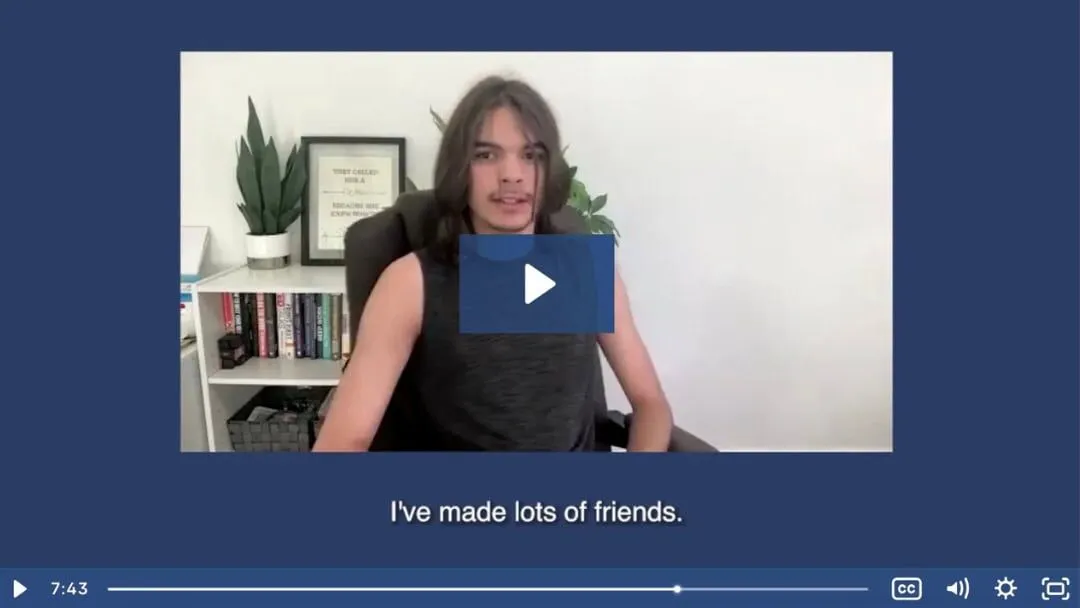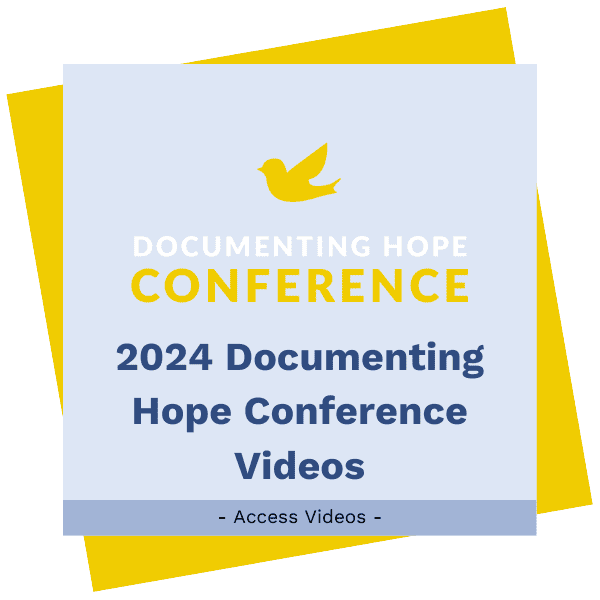Speech, language, and communication support are essential components of care for many individuals with autism. Speech-language pathologists (SLPs) provide assessment and ongoing diagnostic treatment to address a wide range of communication differences and needs, from helping nonspeaking children find a reliable communication method to supporting highly verbal individuals with social communication challenges.
Understanding the Difference Between Speech and Language
While the terms speech and language are often used together and sometimes interchangeably, it’s important to note that these are distinctly separate aspects of communication. Speech is the physical act of motorically producing sounds and words using the muscles of the mouth, lips, tongue, and vocal folds. It includes articulation (how clearly sounds are made), voice, and fluency.
Language refers to the system of words, grammar, and meaning we use to share ideas, ask questions, understand others, and connect socially. Some children may have challenges with speech but not language, or vice versa, and many children with autism benefit from support in one or both areas. Understanding the distinction helps ensure each child gets the right type of support for their unique communication needs.
Communication Is Not One-Size-Fits-All
Children and individuals with autism may communicate in many different ways. Some are fully speaking, others are minimally speaking, and some do not use speech at all, but instead use sign language or Augmentative and Alternative Communication (AAC).
Nonspeaking does not equate to a lack of language comprehension or a lack of understanding. This is why many in the autistic community and autism advocates are suggesting replacing the term “nonverbal” with “nonspeaking”, as nonverbal has long been interpreted to mean an impairment with speech and a lack of language comprehension, while nonspeaking has more implication that their language comprehension is intact.
Every child deserves to be heard and understood, regardless of their communication modality and speech-language pathologists are trained to help assess, support, find and develop each child’s unique communication strengths.
Receptive and Expressive Language
Language is broken down into two main categories of receptive and expressive language.
- Expressive language: How a child shares their thoughts, needs, and ideas with others
- Receptive language: How a child understands spoken or written information
Both receptive and expressive language skills may develop in uneven ways for children with autism, with some children showing advanced strengths in certain areas and delays or differences in others. SLPs assess these strengths and needs in order to create personalized interventions and strategies.
Some children may also benefit from support with language processing or auditory comprehension, particularly if they have difficulty interpreting spoken information quickly or accurately. These challenges may be related to auditory processing differences (e.g., discriminating speech from background noise, auditory memory, and phonological awareness). SLPs can support the child with language processing and auditory processing issues, while an audiologist should be consulted as well to help identify exactly what the child’s specific auditory processing challenges may be (language specific vs. auditory processing specific or a combination).
Understanding the Five Domains of Language
Receptive and expressive language can each be further broken down into five domains of language. Assessment and intervention with a skilled speech-language pathologist can assess and address the five core domains of language in both receptive and expressive language. These domains interact to form the foundation of language and communication:
- Phonology: The sound system of a language, including how sounds are organized and used to make meaningful words, phrases, sentences, and messages. Some children with autism may have differences in phonological development or speech sound production based on phonological processes.
- Morphology: The structure of words, and the use of grammatical markers (such as “-ed” for past tense or “-s” for plurals). Differences in morphological development can affect sentence construction and the meaning of the overall message.
- Syntax: The rules of language that govern word order and sentence structures. Some children with autism may show differences in how they combine words into phrases and sentences.
- Semantics: The meaning of words and how they relate to each other. Challenges in semantics may include difficulty with abstract language, multiple meanings of words, and/or figurative language (e.g., similes and metaphors).
- Pragmatics: The social rules of language, including how we use words and actions to communicate in different contexts. Many children with autism experience significant challenges with pragmatic language, which affects conversational skills and social communication such as but not limited to turn-taking, body language, theory of mind and understanding the perspective of others.
Speech-language pathologists work across all of these areas to help children communicate in ways that are effective, authentic, and meaningful. It’s important to note that children and individuals can have challenges with any of these five domains of language in either or both receptive and expressive language.
Pre-Linguistic and Play-Based Foundations
For children who are not yet using words or language using other modalities (sign, AAC, etc.), therapy often begins by supporting pre-linguistic communication skills. These are developmental skills that are considered foundational prerequisites to future language development. Pre-linguistic skills include but are not limited to; joint attention, imitation, and symbolic play. An SLP will often assess and if needed, work to develop, support, or strengthen a child’s pre-linguistic skills before diving into higher level speech and language targets, so that the proper foundations for language development are ensured.
Given these pre-linguistic skills and how they relate to speech, language, and communication as a foundation, it should come as no surprise that a child’s play development is often a crucial area of focus (especially for young children). Many children with autism benefit from support in developing symbolic play, pretend play, or interactive play with peers or caregivers. Speech-language pathologists often incorporate play-based and child-led approaches into therapy, following the child’s interests and motivations to build meaningful connections and scaffold communication skills naturally and joyfully. This is especially important for children younger than 3-4 years old.
Gestalt Language Processing
It’s important to note that not all children with autism develop language in the typical developmental linear way. Some are gestalt language processors, meaning they learn language in larger “chunks” or scripts, such as memorized phrases they’ve heard from their parents and/or caregivers, in books, from movies, or routines, before they can break language down into smaller parts (single words or new sentence constructions).
Many gestalt language processors use echolalia, the repetition of words or phrases, as part of their natural language development. Echolalia, both immediate and delayed, can be a meaningful step toward communication and should be respected as valid language, particularly when understood in context.
SLPs with an understanding of gestalt language processing can help children move from using memorized scripts and echolalia to flexible, self-generated language, functionally, while honoring and respecting the child’s unique learning style and communication preferences.
Therapies for Motor-Speech Based Challenges
In addition to differences in language development, some children with autism experience motor planning and coordination challenges with speech. One example of a motor-speech based disorder is called Childhood Apraxia of Speech (CAS). CAS is a motor-speech disorder where the brain has difficulty planning and programming the precise movements of the anatomy and physiology required for clear speech. They know exactly what they want to say, but they have difficulty in the motoric execution of speech output. This results in inconsistent sound production and errors, as well as difficulty transitioning between sounds, syllables, and words.
SLPs use a variety of motor-based therapy approaches to support speech clarity and intelligibility for children with CAS or other speech-motor challenges. Some examples include but are not limited to:
- PROMPT (Prompts for Restructuring Oral Muscular Phonetic Targets): A tactile-kinesthetic approach that uses gentle touch cues on the child’s face and jaw to support accurate speech movements and motor plans.
- Kaufman Speech to Language Protocol (Kaufman Approach): A well-known hierarchy-based approach that simplifies word targets and systematically builds complexity using auditory, visual, and tactile cues to support accurate speech sound production.
- Other multi-sensory cueing hierarchies and techniques: Skilled SLPs who specialize in motor-speech based disorders, like CAS, often utilize effective therapies that integrate a combination of auditory models, visual cues (such as mouth shape modeling), and tactile feedback to help the child successfully learn and generalize speech movements and motor plans.
Motor-based speech therapies are always personalized to the child’s needs and abilities, with an emphasis on supporting functional, meaningful communication, not simply “perfect” speech.
For Nonspeaking and Minimally Speaking Communicators
Some children, such as those with Developmental Coordination Disorders or Whole-Body Apraxia (also sometimes referred to as Global or Generalized Motor Apraxia) have such significant difficulties in motor planning, beyond the mouth, and throughout their body. For many of these children, their motor planning for speech may be so impacted that they do not develop functional spoken language.
It’s estimated that more than one third of children diagnosed with autism will remain nonspeaking or minimally speaking throughout their lifetime, despite receiving speech, language, and communication therapies. However, many go on to communicate effectively using sign language, AAC systems, spelling-based methods, or other modalities, sometimes a combination approach (referred to as Total Communication).
Just because someone is nonspeaking, it does not mean they do not have ideas, thoughts, and feelings to share. Once again, a speech disorder does not automatically mean a language disorder or lack of cognition or comprehension. For these children and individuals, SLPs often explore a variety of Assistive Technology and Augmentative and Alternative Communication (AAC) tools and methods to help them access communication in ways that match their motor abilities, sensory needs, and cognitive strengths.
Options include:
- Low-tech systems (e.g., picture exchange systems, communication boards)
- High-tech AAC (e.g., tablets or dedicated speech-generating devices like LAMP Words for Life®)
- Spelling-based or letter board communication supports
Spelling-based methods like Spelling to Communicate (S2C) founded by Elizabeth Vosseller, M.A., and The Spellers Method by Dana Johnson, PhD, are increasingly being explored by families of nonspeaking individuals with autism. These approaches focus on supporting purposeful motor movement and spelling as a way to express complex thoughts.
According to the Spellers Method website, what makes the Spellers Method approach unique is that it, “…incorporates research and expertise from the fields of assistive technology, developmental optometry, and occupational therapy to guide each student’s unique path to fluency, from their very first spelling session through their self-determined ultimate goal. For some that means open communication on a stencil; for others it means pursuit of autonomous typing skills i.e., the goal of spelling without a trained communication partner holding their keyboard.”
While these approaches remain outside traditional clinical practice of SLPs, many families are reporting meaningful breakthroughs with spelling-based communication. It is important to collaborate with professionals who respect the autonomy, intelligence, and lived experiences of nonspeaking individuals and their families.
One of the most important principles in supporting children and individuals with autism, especially those who are nonspeaking or have complex communication needs, is presuming competence. This means believing that every person has the capacity to think, learn, and understand, even if they are not yet able to express themselves in conventional ways. Presuming competence leads to higher expectations, greater access to meaningful communication, and deeper respect for the individual. When we assume potential rather than limitation, we create space for true connection, autonomy, and growth.
Total Communication
Many children benefit from a Total Communication (TC) approach, using multiple modalities to support and express communication. This might include vocalizations, minimally speaking, signing, gestures, facial expressions, low-tech AAC options, speech-generating devices, and/or letterboards – it’s a combination of whatever methods of communication they choose and are able to functionally use to convey their message. For example, a child may be minimally speaking for everyday needs but use a letterboard to spell out longer, more complex messages. Some children also use sign language as a primary mode of communication or alongside other supports. For many, signs can be easier to produce than speech and can offer a reliable and expressive way to connect with others. Total Communication honors all forms of expression and empowers the child to access the full range of their communication abilities.
Social Communication and Pragmatic Language Challenges
Some children with autism do not have challenges with motor planning for speech, but they still struggle with the social and pragmatic aspects of language and communication. Speech-language pathologists can help these individuals with:
- Understanding and using nonverbal cues (e.g., facial expressions, gestures)
- Building flexible conversation skills (e.g., turn taking, shifting topics, reciprocating questions)
- Navigating friendships and social situations (real or hypothetical)
- Recognizing, interpreting, and expressing emotions
- Understanding figurative language or sarcasm
- And more…
Therapy often includes structured practice in real-life or play-based settings and can be delivered one-on-one or in small groups, depending on the child’s needs.
For older children, therapy may also support literacy-based language development, including skills such as reading comprehension, written expression, and storytelling. These language-based academic skills are closely connected to spoken speech-language and AAC based communication and can be supported by speech-language pathologists in developmentally appropriate ways.
Respecting and Supporting Authentic Communication
Speech, language, and communication therapies for children with autism should always aim to honor and support their communication style, whatever that looks like for each child and individual. The goal is not to change who a child is, but to help them access connections and express who they are…, their thoughts and ideas, and participate meaningfully in their relationships and community.
Speech, language, and communication therapies are most effective when they include family involvement and caregiver coaching. Many SLPs partner with parents and caregivers to embed communication strategies into everyday routines, making therapy more meaningful and successful in the child’s natural environment.
Families raising bilingual or multilingual children are sometimes advised to focus on one language, but research supports that bilingualism does not cause or worsen speech and language delays. With the right support, children with autism can thrive with communication in multiple languages, and SLPs can help guide families through that process.
Getting Support with Speech, Language, and Communication
If your child with autism is struggling with speech, language, and/or communication, it is strongly encouraged that you connect with a licensed, compassionate speech-language pathologist who is committed to evidence-based, family-centered, and strengths-focused care. Look for a local SLP who will prioritize developmental, relationship-based, and respectful communication supports tailored to your child’s unique needs.
School-based speech-language pathologists play an important and valuable role in a child’s educational team. However, their services are typically limited to addressing speech, language, and communication skills that directly support a child’s access to a free and appropriate public education (FAPE), as outlined in the Individualized Education Plan (IEP). This often means that support must stay focused on academic goals, and may not extend to areas like feeding, AAC device trials, motor-based speech therapy, or parent coaching. Caseload size and school system constraints can also limit how individualized or intensive the services can be.
If your family has the resources, working with a private SLP in addition to your school team is highly encouraged. A private SLP can offer a more comprehensive and individualized approach, supporting your child’s communication across all areas of daily life (including home, play, social interactions, and community participation). For example, a private SLP may provide specialized support for Childhood Apraxia of Speech using approaches like PROMPT or Kaufman, guide families through AAC trials and implementation, offer therapy for feeding and oral motor challenges, support spelling-based communication methods, and more. Private providers often also have the flexibility to include parent coaching and collaboration, ensuring therapy is integrated into your child’s real-world routines and family life.
Every child deserves the tools, access, and support to express who they are, whether they speak with their voice, a device, signs, or a letterboard. Every child deserves to be seen, heard, and valued for who they are.
About Shandy Laskey MA CCC-SLP FNTP
Shandy is an integrative speech-language pathologist and pediatric feeding specialist, as well as a Functional Nutritional Therapy Practitioner, and Documenting Hope Health Coach. She is a fierce nutrition advocate for children impacted by complex picky eating, neurodevelopmental disorders, and special needs. She is continuously advancing her knowledge in functional and bio-individual nutrition therapies for these specific demographics of children.
Shandy is the founder and CEO of Speaking of Health & Wellness, LLC. Through her own health and wellness journey, she learned the profound impact of nutrition and lifestyle on cognition and overall well-being first hand. Shandy has an intense passion for integrating holistic nutrition and lifestyle strategies into her work with families.

She provides virtual parent coaching to guide families on identifying ways to address the underlying causes of their child’s condition and/or related symptoms, while also teaching integrative strategies for learning, behavior, communication and mealtimes.
Shandy is the Director of Community Development at Documenting Hope. Read more about Shandy’s story and work at: SpeakingOfHealthAndWellness.com
Still Looking for Answers?
Visit the Documenting Hope Practitioner Directory to find a practitioner near you.
Join us inside our online membership community for parents, Healing Together, where you’ll find even more healing resources, expert guidance, and a community to support you every step of your child’s healing journey.
Sources & References
Adam, G., et al. The influence of choline treatment on behavioral and neurochemical autistic-like phenotype in Mthfr-deficient mice. Transl Psychiatry. 2020 Sep 18;10(1):316.
Bauer, A.Z., et al. Prenatal paracetamol exposure and child neurodevelopment: A review. Horm Behav. 2018 May:101:125-147.
Borre, Y.E., et al. Microbiota and neurodevelopmental windows: implications for brain disorders. Trends Mol Med. 2014 Sep;20(9):509-18.
Cardinal, D.N., et al. The Maturing of Facilitated Communication: A Means Toward Independent Communication. Res. Pract. Persons Severe Disabil. 2014; (39)189–194.
Courchesne, V., et al. Autistic children at risk of being underestimated: school-based pilot study of a strength-informed assessment. Molecular Autism. 2015 Mar 6;6:12.
Frye, R.E., et al. Folinic acid improves verbal communication in children with autism and language impairment: a randomized double-blind placebo-controlled trial. Mol Psychiatry. 2018 Feb; 23(2): 247–256.
Gabis, L.V., et al. Improvement of Language in Children with Autism with Combined Donepezil and Choline Treatment. J Mol Neurosci. 2019 Oct;69(2):224-234.
Hamlin, J.C., et al. Dietary intake and plasma levels of choline and betaine in children with autism spectrum disorders. Autism Res Treat. 2013;2013:578429.
Jadavji, N.M., et al. B-vitamin and choline supplementation increases neuroplasticity and recovery after stroke. Neurobiol Dis. 2017 Jul;103:89-100.
Jaswal, V.K., et al. Eye-tracking reveals agency in assisted autistic communication. Scientific Reports. 2020 May 12;10(1):7882.
Koegel, L.K., et al. Definitions of Nonverbal and Minimally Verbal in Research for Autism: A Systematic Review of the Literature. J Autism Dev Disord. 2020 Aug;50(8):2957-2972.
Langley, E.A., et al. High maternal choline consumption during pregnancy and nursing alleviates deficits in social interaction and improves anxiety-like behaviors in the BTBR T+Itpr3tf/J mouse model of autism. Behav Brain Res. 2015 Feb 1;278:210-20.
Morris, C.R., et al. Syndrome of allergy, apraxia, and malabsorption: characterization of a neurodevelopmental phenotype that responds to omega 3 and vitamin E supplementation. Alternative Therapies in Health and Medicine. Jul-Aug 2009;15(4):34-43.
Resseguie, M.E., et al. Aberrant estrogen regulation of PEMT results in choline deficiency-associated liver dysfunction. J Biol Chem. 2011 Jan 14;286(2):1649-58.
Skripuletz, T., et al. The choline pathway as a strategy to promote central nervous system (CNS) remyelination. Neural Regen Res. 2015 Sep;10(9):1369-70.
Warner, B.B. The contribution of the gut microbiome to neurodevelopment and neuropsychiatric disorders. Pediatr Res. 2019 Jan;85(2):216-224.
Woodbury, M.L., et al. Examining the relationship of acetaminophen use during pregnancy with early language development in children. Pediatr Res. 2023 Dec 11.
Zaigham, M., et al. Prelabour caesarean section and neurodevelopmental outcome at 4 and 12 months of age: an observational study. BMC Pregnancy and Childbirth. 2020 (20)564.
Zeisel, S.H. Choline: Critical Role During Fetal Development and Dietary Requirements in Adults. Annu Rev Nutr. 2006;26:229-50.
Resources
Apps
Articles
Bronston, Berri. Devoted dad is partner in autistic graduate’s success. 22 May 2018, Tulane News.
Kedar, Ido. I Was Born Unable to Speak, and a Disputed Treatment Saved Me. 23 Sep 2018, Wall Street Journal.
Books
Chinitz, Judy Hope. Spellbound: The Voices of the Silent. Independently published, 2023.
Gaivin, Dawnmarie, et al. The Spellers Guidebook: Practical Advice for Parents and Students. Skyhorse, 2023.
Handley, J.B., and Handley, Jamison. Underestimated: An Autism Miracle. Skyhorse, 2021.
Kedar, Ido. Ido in Autismland: Climbing Out of Autism’s Silent Prison. 2012, Sharon Kedar.
Mukhopadhyay, Soma. Understanding Autism through Rapid Prompting Method. 2008, Outskirts Press.
Mukhopadhyay, Tito Rajarshi. How Can I Talk If My Lips Don’t Move?: Inside My Autistic Mind. Arcade, 2011.
Peña, Diego. Anatomy of Autism: A Pocket Guide for Educators, Parents, and Students. 2017, CreateSpace Independent Publishing Platform.
Peña, Edlyn Vallejo. Leaders Around Me: Autobiographies of Autistics who Type, Point, and Spell to Communicate. 2019, independently published.
Sando, Julie. Small Steps, Big Impact: A Progress Playbook For Communication Partners. 2020, independently published.
Starling, Tori. Voice of Truth: A Mother's Journey to Help Her Son Heal from Apraxia of Speech. Juniper Ray Publishing, 2024.
Devices
Logitech Keys-to-Go Portable Wireless Keyboard for Apple
Podcasts
Schools That Use Assistive Technologies
Videos
UnderEstimated: The Heroic Rise of Nonspeaking Spellers
Websites
California Lutheran University Autism and Communication Center
Growing Kids Therapy Center (GKTC)
Helping Autism through Learning and Outreach (Soma RPM)
The International Association for Spelling as Communication (I-ASC)







